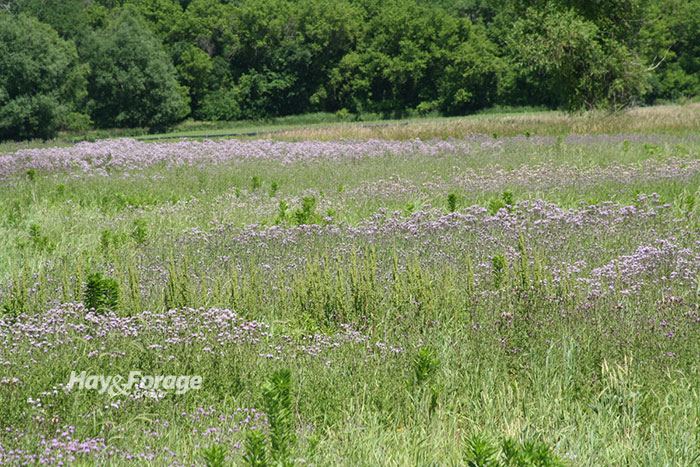
In his book, “Fundamentals of Weed Science,” author Robert Zimdahl relates a story about British General John B. Burgoyne. The British had planned to divide the states along the Hudson River. Burgoyne’s orders were to proceed from Canada by way of Lake Champlain, which forms part of the boundary between New York and Vermont. The unsuccessful campaign began in January 1777 and ended in October with the surrender of Burgoyne and his troops.
The subplot of this story involves the hay that Burgoyne had brought with him from Canada to feed the troop’s horses. As the story is told, it is thought that the foreign hay was contaminated with Canada thistle seed.
Today, Canada thistle is cursed throughout much of United States. It has reached the point where total eradication is an unrealistic goal. The horse, so to speak, is out of the barn. Interestingly, the same weed in Australia is called California thistle, no doubt a reflection of where they think it came from.
Farmers often lump thistles into a single category, but Canada thistle’s perennial nature and ability to shoot underground rhizomes in such a flurry of directions that not even Google maps can follow them makes this species different. It also makes the weed difficult to control, especially once it gains an offensive stronghold.
To measure how many roots and rhizomes Canada thistle can produce, researchers in three different states planted either a single root segment 12 inches long or a 6-inch diameter plug of Canada thistle plants in 4x4x8-foot aboveground boxes filled with soil. No tillage or irrigation was applied to the boxes. Within 12 to 16 months, buds on these roots produced an average of 174 shoots and 930 feet of new roots, illustrating this weed's ability to spread unless adequately controlled.
In my experience, simply mowing Canada thistle just makes them mad, and they often grow back with even more vigor and resolve. It’s often recommended to repeatedly mow Canada thistle in hayfields and pastures to weaken their root reserves and ability to grow back. Although this might be true, not many people are willing to mow with the same frequency as their lawn, which is nearly what it would take to be effective. Grazing a herd of goats might be another nonchemical option but also one not often desired.
If living on your mower or goats aren’t your thing, then herbicides offer the next best control option. The cheap list begins with 2,4-D or dicamba, but it will take more than one application. Both a spring and fall application are typically recommended when plants are actively growing. If the patch of thistles isn’t too large, spot spraying is the best approach because the herbicide will kill any desirable broadleaf species.
Products containing aminopyralid or clopyralid are effective for the control of Canada thistle, especially in the early fall before temperatures turn cold. Generally, there is no grazing or haying restrictions after application of these chemicals; however, they do stay in the plant tissue and will be present in the manure. For this reason, using plant mulch or composted manure from animals consuming the treated forage is not recommended.
Picloram is another active ingredient that is effective in controlling Canada thistle, but post-application grazing and haying intervals are longer for these products. The nonselective chemical glyphosate will also kill Canada thistle; its use is generally limited to small patches that need spot sprayed.
For any chemical control method, always read the label for application guidelines and note any grazing or haying restrictions.
The best approach for controlling Canada thistle in pastures and hayfields is to not ignore the problem. Keeping a small outbreak under control is much easier than an outright invasion. Never underestimate the future capabilities of a single Canada thistle plant.

